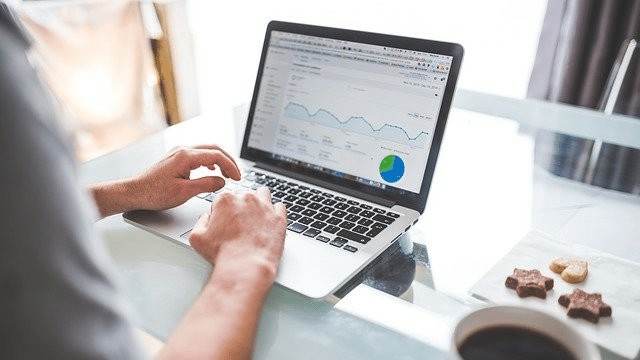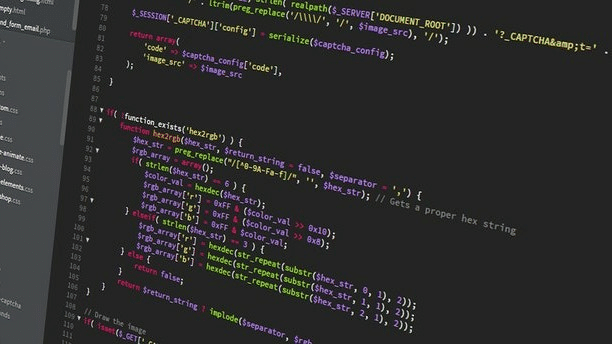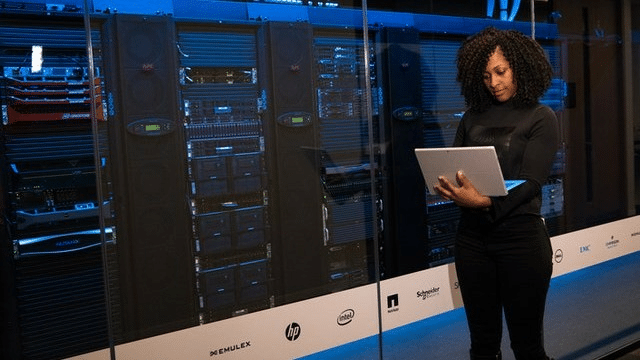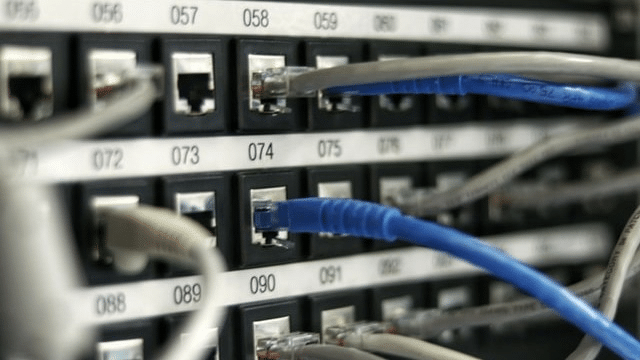Hi, and welcome to another exciting article on Cybersecurity Analytics.
This Cybersecurity Analytics guide will define Cybersecurity Analytics, explore types of Cybersecurity Analytic Tools, and highlight the importance of Cybersecurity Analytics.
By the end of this exhaustive article, you will be able to make intelligent career decisions concerning Cybersecurity Analytics.
In particular, we will delve into the following critical areas:
- What is Cybersecurity Analytics
- Understanding Cybersecurity Analytics
- Types of Cybersecurity Analytic Tools
Let’s dive right in!
Introduction to Cybersecurity Analytics

Cybersecurity is a growing concern as cyberattacks become more sophisticated and commonplace in the current cyber age.
And at the heart of this ongoing war on cybercrime is Cybersecurity Analytics.
Cybersecurity professionals heavily rely on Cybersecurity data to secure internet hardware and software from malicious cyberattacks.
Cybersecurity experts can preempt, monitor, arrest, and neutralize Cybersecurity attacks and breaches using advanced Cybersecurity analytic platforms and tools.
But having the correct data is just half the story.
Cybersecurity professionals need the skills and experience to collate, interpret and categorize these data.
Read along as we break down everything to do with Cybersecurity Analytics.
Let’s start with the basics.
What is Cybersecurity Analytics?

Cybersecurity Analytics uses advanced Cybersecurity data to detect, identify, monitor, and mitigate threats to internet-connected systems and environments.
The need for Cybersecurity Analytics arises due to the increasing viciousness and sophistication of cyberattacks which overwhelm the traditional cyber defense software tools and programs.
Cybersecurity Analytics seeks to reduce and neutralize all Cybersecurity risks, including ransomware, phishing, data leakages, hacking, and insider threats.
Cybersecurity Analytics primarily relies on collecting, sorting, analyzing, and interpreting security data to optimize the internet environment and network security.
Cybersecurity Analytics allows security experts to;
- Preempt cyberattacks
- Identify vulnerabilities
- Mitigate Cybersecurity breaches
- Collect evidence
- Build timelines
- Design proactive and innovative Cybersecurity strategies
Please continue reading as we take a closer look at Cybersecurity Analytics.
Understanding Cybersecurity Analytics

Cybersecurity is a security approach focusing on the early detection, monitoring, and neutralizing of various cyber threats.
To clearly understand Cybersecurity Analytics, you must consider individual cyber defense strategies and their reliance on Cybersecurity data.
Here are the critical areas of Cybersecurity Analytics;
Data Analytics
Regarding online security, Cybersecurity and Data Analytics are joined at the hip and complement each other.
Cybersecurity and Data Analytics examines raw datasets to extract critical security information in securing internet environments.
The ability of security experts to identify trends, patterns, and events from raw, unstructured, historical, real-time, and structured data is vital in reducing Cybersecurity risks.
Data Security Analytics uses advanced algorithms, data mining, open source languages, data reporting, and visualization tools to extract critical security information.
Using data analytics, security experts can collect critical cyber data from virus scanners, routers, firewalls, operating system event logs, and business applications.

Additionally, machine learning and advanced algorithms allow Cybersecurity experts to conduct real-time threat and data analytics to quickly preempt and neutralize cyber threats.
Data Analytics relies on descriptive, diagnostic, predictive, and prescriptive analytics.
Predictive Analytics
Predictive Analysis is perhaps the most vital form of data analytics and is widely deployed in Cybersecurity.
As the threat of cybercrime becomes more prevalent predictive analytics finds more real-world uses in the Cybersecurity industry.
Unlike most Cybersecurity measures that fight cyberattacks after they happen, Predictive Analytics takes a proactive approach and aims to neutralize potential threats.
By using Predictive Analytics, Cybersecurity professionals can accurately identify vulnerabilities and neutralize potential cyber threats before they deploy.
Predictive Analytics relies on advanced algorithms, automation bots, predictive modeling, and big data analytics to;
- Identify system vulnerabilities and potential threats
- Prioritize alerts
- Automate threat intelligence
- Effective incident detection
- Enhanced forensic incident evaluation
- Identify high-risk users and devices
- Identify traffic flow and data irregularities
- Identify user behavior
Machine learning is also widely used in Cybersecurity Predictive Analysis to find hidden patterns and trends in user behavior and endpoint datasets.
Using machine learning, Information Analysts and Cybersecurity experts scan and create visualizations from web proxies, traffic logs, and network traffic.
Continue reading to learn more about Cybersecurity Analytics and why it’s critical for modern-day Cybersecurity.
Big Data Analytics
It’s impossible to talk of Cybersecurity Analytics without touching on Big Data Analytics.
The internet is enormous, with billions upon billions of individual pieces of data flying around at warp speeds.
It is these datasets that form the basis of Cybersecurity Analytics.
Big Data Analytics refers to capturing, evaluating, identifying, sorting, and interpreting vast amounts of unstructured digital information within the cyber sphere.
Cybersecurity Analysts use Big Data to detect and neutralize cyber threats even before they occur.
Big Data Cybersecurity Analytics primarily relies on integrating behavioral analytics in Cybersecurity.
Behavioral Analytics involves collecting, sorting, and analyzing behavioral datasets to extract crucial security information.
Cybersecurity experts can quickly identify anomalies and discrepancies in user behavior using Big Data and Artificial Intelligence, thereby foiling potential cyberattacks.
Unlike typical Cybersecurity tools that rely on known malicious signatures, Big Data depends on users’ or systems’ historical data, user behavior, and other metrics to create specific user profiles.

Cybersecurity systems then use this generated user profile to flag and investigate any user deviations or discrepancies from the established user behavior.
For example, if a hacker accesses an internet user’s password or login information, Big Data Analytics will quickly spot differences between the hacker’s and verified online user behavior.
Differences in known markers like location, device IDs, login credentials, internet usage, and web link visits will alert the system of security for malicious or suspicious activities.
Another revolutionary application of Big Data Analytics in Cybersecurity is the ability of Big Data to identify a user’s commonalities across a range of electronic devices and systems.
For example, the vast amount of digital information that Big Data processes will highlight specific user behaviors when accessing the net via a smartphone, tablet, or smart TV.
Big Data allows Cybersecurity systems to track users’ behavior across various devices and create a specific user profile that a hacker will find challenging to mimic.
Specific markers like camera resolution, font size, and night light usage in the different devices will allow the system to differentiate between a cybercriminal and the actual user.
Cloud Security Analytics
Another critical component of Cybersecurity is Cloud Security Analytics.
More users now rely heavily on the internet cloud to conduct business and activities.
Cloud services providers use data from cloud users to identify malicious or suspicious user activities that may constitute cyber threats.
Since cloud service providers store their users’ online patterns and behavior, they can quickly spot deviations from the norm and take appropriate action.
Cloud Analytics quickly detect, identify, report, and neutralize cyber threats by relying on a user’s historical data.
The main advantages of Cloud Analytics include;
- Reduced cyber threat detection time
- Increased threat detection
- Rapid reaction times
Cyber Risk Analytics
Cyber Risk Analytics refers to the various technologies, systems, and methodologies critical in identifying, assessing, categorizing, and prioritizing an organization’s Cybersecurity risks.
As Cybersecurity threats become more prevalent and severe, organizations are turning to Cyber Risk Analytics to improve their threat intelligence awareness.
A Cyber Risk Analysis is a sequential process that largely relies on advanced algorithms and statistical modeling to identify possible cyber attacks.

The primary types of Cyber risk analysis include quantitative and qualitative risk analysis.
Here is a typical Cyber Risk Analytics procedure;
1. Identifying all entities relevant to an organization’s Cybersecurity environment, including employees, client data, IT systems, equipment, and the parent organization or company.
2. Collect critical security information from an organization’s Cybersecurity entities, including login information, passwords, timelines, and web activities.
The information in this controlled security environment is critical in creating a user database.
3. Develop relevant algorithms and mathematical models using the informational database collected from the different entities.
Security Data Analysis allows organizations to identify their vulnerabilities and optimal resource deployment.
The main advantages of Cyber Data Analytics include;
- Reducing costs
- Increasing return on investments
- Meeting regulatory compliance
- Reduce losses due to data breaches
- Functional Cyber Data Analytics template
- Improve threat intelligence
- Enhance applications performance and reduce glitches
Security Information and Event Management (SIEM)
SIEM is an integral part of Cybersecurity Analytics and involves collecting real-time log data of various security and network devices.
The advanced SIEM tools use these individual pieces of data to correlate particular behaviors and patterns that signify a potential cyber threat.
SIEM tools enhance Cybersecurity and expose real-time security issues affecting internet environments.
The main features of a SIEM system include;
- Event data collection, metrics, and logs
- Real-time alerts and notifications
- Automatic security incidence response
- Data analytics and event correlations
- Dashboards, reports, and visualization
Even though SIEM is a fundamental component of Cybersecurity, many organizations are not using it to its inherent security gaps.
The main drawbacks of SIEM include;
- Complex
- Costly integration
- Limited data sources
- Misleading reports
- Reporting limits
- Poor data retention
Actively pairing SIEM with other Cyber Analytics Programs like log analytics goes a long way in improving organizational Cyber Analytics and enhancing overall Cybersecurity.
Real-Time Threat Detection
Cybersecurity is synonymous with real-time, as everything in the cybersphere happens instantly.
Understanding how Cybersecurity Analytics affects Real-Time Threat hunting and detection is critical.
Learning about Real-Time Cybersecurity Analytics allows organizations to take proactive approaches that prevent potential cyber-attacks.
So what is Real-Time Threat Analysis, and why is it essential to Cybersecurity Analytics?

Real-Time Threat Analysis refers to the different tools and programs that provide live threat detection and monitoring.
As hacking becomes more complex, Cybersecurity systems must adapt to preempt rather than react after a cyberattack.
This proactive Cybersecurity approach reduces the cost and damages due to cyberattacks.
Cybersecurity Analytics Automation
As cyber-attacks become more prevalent, the need for Automated Cybersecurity systems is increasing rapidly.
Cybersecurity Automation is changing how organizations deal with the challenges of advanced persistent threats in the cyber sphere.
Automating Cybersecurity Analytics systems is critical in keeping your online environment safe from cyber threats.
By leveraging the power of AI, and machine learning, Data Analysts, can quickly identify negative patterns and behaviors in datasets.
Cybersecurity Engineers are now developing complex algorithms to identify and neutralize malicious attacks on internet systems instantly.
Automating Cybersecurity allows security professionals to effectively collect, categorize, sort, and preempt various types of cyber threats.
The top benefits of Automating Cybersecurity include;
- Reducing human resources needs and costs
- Increasing effectiveness of cybersecurity systems
- Reducing the associated damages of cyberattacks
- Reducing the time needed to deal with cyberthreats
Network Security Analytics
Network Security Analytics (NSA) is a relatively new and rapidly evolving subset of Cybersecurity Analytics.
The revolutionary Network Security Analytics uses a different concept to fight cybercrimes than traditional IDS/IPS solutions.
The NSA Cybersecurity system analyzes normal user behavior by studying user patterns from big datasets, unlike IDS/IPS solutions that rely on vulnerability assessments and signatures.
Data science experts can use user behavior information to create models that report deviations from standard user patterns.

Here is how network security analytics works;
1. A collector aggregates network behavior patterns from big datasets.
Security experts typically use clustering algorithms to identify and group similar user patterns in this step.
2. After identifying normal network behavior, machine learning algorithms develop models of user behavior profiles.
3. Data analysis is network security analytics’s next and final stage.
During normal operations, information systems using network models can easily detect and report deviations from normal network behavior.
Continue reading to learn why Cybersecurity Analytics is critical to organizations.
Importance of Cybersecurity Analytics

The fight against cybercrime is rapidly evolving.
Modern Cybersecurity is more concerned with preventing rather than reacting to cyber threats.
Information Analytics offers numerous applications in the Cybersecurity industry.
Here are the top applications of Cybersecurity Analytics;
Proactive Incident Detection
Cybersecurity provides an avenue for security experts to quickly identify malicious activities and cyber threat patterns before deployment.
The ability to preempt and proactively attack cyber threats is critical in maintaining an internet environment’s integrity.
Cybersecurity systems depend on algorithms and AI to extract vital real-time security data to prevent cybercrime.
Prioritized Alerts
Cybersecurity Analytics offers prioritized alerts critical in resource allocation, especially for organizations with small security budgets.
By auditing potential cyber threats, intrusion detection systems can identify the most severe security threats and push them to the top of the queue.
The ability to prioritize security threats improves the efficiency of security teams and reduces total Cybersecurity costs.
Enhanced Risk Management
Cybersecurity Analytics improves an organization’s overall Cybersecurity risk management strategies.
Using Security Analytics, an organization can learn the types of security risks, weak points in its cyber defense systems, and the effects of potential cyber-attacks.
The wealth of data that Cybersecurity Analytics provides to an organization helps the management create relevant and effective risk management strategies.
Automated Threat Intelligence
Cybersecurity Analytics allows security experts to create automated threat intelligence systems that react to cyberattacks faster and more professionally.
Automating the threat hunting and detection process allows organizations to allocate resources effectively and reduce staffing demands.
Additionally, automating Cybersecurity with machine learning allows Cybersecurity systems to learn and expand their effectiveness against cyber threats.
Improved Response Time
Response time is critical when dealing with Cybersecurity since one of the most significant advantages of Cybersecurity Analytics is it’s real-time, which means that security teams can respond faster to cyberattacks.
Traditional Cybersecurity measures are often slower and rely on historical data, which leaves room for higher levels of damage from cyber threats.
Enhanced Forensic Incident Investigations
Since Cybersecurity heavily relies on data analytics, security teams often have enough data to perform comprehensive incident investigations.
Using Cybersecurity Analytics, security teams can better analyze and interrogate cyberthreat incidents.

Cybersecurity Analytics will quickly provide security experts with a cyberattack’s source, severity, and effects.
Enhanced Cybersecurity Forensic Investigations allow organizations to identify weak areas of their cyber defense system and how to improve on them.
Satisfying Regulatory Compliance
Most countries and professional bodies now require organizations to meet specific internet safety regulatory thresholds and operating standards.
Cybersecurity Analytics allows organizations to satisfy these specific and stringent data safety rules.
Common examples of regulatory compliance include;
- Payment Card Industry (PCI) data security standards
- Health Insurance Portability and Accountability Act (HIPPA)
- General Data Protection Regulation (GDPR)
- Cybersecurity Maturity Model Certification (CMMC)
Read on to understand the applications of Cybersecurity Analytics in everyday life.
Cybersecurity Analytics Use Cases

Cybersecurity and Information Security Analytics applications are growing as the world becomes more digitally advanced.
The digitization of our everyday life means that instances of cyber threats are also increasing, leading to the widespread use of Cybersecurity Analytics.
Here are some of the common Cybersecurity use cases;
- Identifying malicious trends and patterns from internet traffic analysis
- Monitoring cloud security
- Incident reporting and investigations
- Detecting insider threats
- Verifying regulatory compliance
- Proactive threat hunting
- Incident response
- Penetration testing
- User behavior analysis
- Detecting and identifying compromised accounts
- Detecting data exfiltration attempts
Conclusion

Cybersecurity Analytics is changing how the security industry deals with the growing threats of cybercrime and attacks.
Many governments and organizations now use Cybersecurity Analytics to identify and determine potential cyber threats and ways to deal with them effectively.
By combining Cybersecurity Analytics with data analytics, and computer science, organizations can now better protect themselves from cyber threats.
We hope that this detailed Cybersecurity Analytics guide has been of help to you and answered all your burning Cybersecurity Analytics questions.
Please continue reading for expert answers to our reader’s frequently asked questions.
Good luck.
FAQs

What is the difference between a Data Breach and a Malware Attack?
In a data breach, Cybercriminals access and steal sensitive user information like social security card numbers, credit card details, or driving license details for extortion or criminal use.
Cybercriminals hold an internet user to ransom during a malware attack by deploying malicious software (Malware) that encrypts the user’s sensitive data.
How is Data Analytics used in Cybersecurity?
Data Analytics which involves collecting, analyzing, sorting, and aggregating vast amounts of unstructured data, is integral to Cybersecurity.
Advanced algorithms and machine learning models allow Cybersecurity systems to analyze data analytics information to pinpoint malicious trends and patterns.
Data Analytics sources include the internet, open source, and third-party data.
Why Data Analytics knowledge is important with Cybersecurity
Data Analytics knowledge is vital to Cybersecurity in the following ways;
– Allow security teams to preempt cyber-attacks
– Enables management to create effective management plans
– Allow the quick resolution of Cybersecurity incidents
– Improve the effectiveness of the Cybersecurity program
– Helps create a priority list of cyberthreat
What is the advantage of using a Data Scientist for Cybersecurity Analytics?
Data Scientists are professionals who study and interpret complex datasets and extract security information from them.
The functions of a Data Scientist in the Cybersecurity industry include;
– Developing complex machine learning algorithms
– Analyzing and interpreting different datasets for security breaches
– Building Cybersecurity models
– Performing prescriptive analytics
What are the main challenges of Cybersecurity Facing Organizations?
The Cybersecurity industry faces numerous challenges, including the following;
– The increasing threat to remote working systems
– Increasing sophistication of cyberthreats
– Shortage of experienced Cybersecurity Professionals
– Regulatory limitations on data sharing
– Reduced effectiveness of Cybersecurity tools
– Large volumes of data from various data sources
What is the definition of Cybersecurity Analytics?
Cybersecurity Analytics is a proactive security approach that collects, aggregates, sorts, and analyzes internet data for security purposes.
Security experts use mathematical models, advanced algorithms, and machine learning to identify malicious trends, patterns, and signatures.
Cybersecurity Analytics allows security teams to preempt and mitigate the effects of cyberattacks.
What are the common types of Algorithms used in Cybersecurity Analytics?
Algorithms are specific instructions codes that use various vectors and parameters to solve mathematical or computational problems.
Standard Cybersecurity Algorithms that detect and mitigate the effects of cyberattacks include;
– Advanced Encryption Standard (AES)
– Elliptical Curve Cryptography (ECC)
– Triple DES (Data Encryption Standards)
– Blowfish
– Two fish
What are the different types of Cybersecurity Threats?
The typical Cybersecurity Threats that attack internet environments include;
– Malicious Software (Malware) attacks
– SQL injection attack
– Emotet attack
– Ransomware
– Spam and phishing
– Authentication and password attacks
– Corporate Account Take Over (CATO)
– Malvertising attacks
– Cloud attacks
– Cross-Site Scripting attack
Which industries heavily rely on Cybersecurity Analytics?
Some industries and sectors require strong cyber defenses due to their sensitive nature and the potential damages from cyberattacks.
Industries that heavily require Cybersecurity include;
– Information Technology and Telecommunications
– Healthcare
– Small businesses
– Education sector
– Supply chain
– Financial sector
– Ecommerce
– Government Agencies









